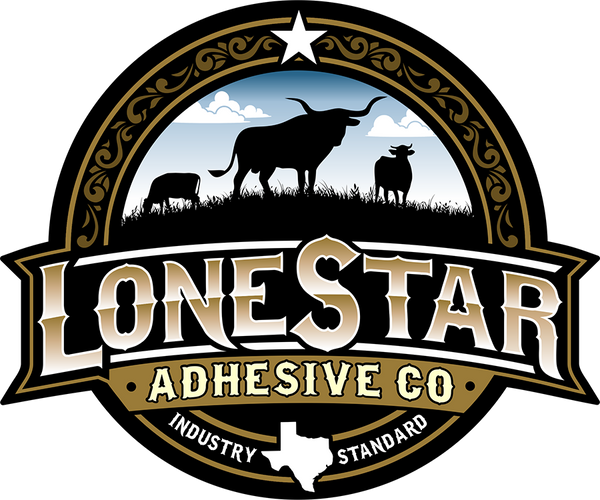How to Put Durra-Bull Adhesive...on Everything
Wondering how to get started with your Durra-Bull Adhesive?
It's easier than you think!
Flat/Shirt Press Directions:
Lay your material’s engraving or embroidered side “face down” on your press, with the shiny side of the adhesive sheet facing the material's backside. Once the adhesive is positioned over the material to your satisfaction, press at 220*F for 10-12 seconds, and allow to cool. See "Special Considerations" for tips on various materials.
Household Iron Directions:
The iron will need to be set to the cotton/linen setting, using no steam. Place an ironing board or old towel on the stable surface you'll be ironing on, so that any moisture emitted does not damage the material. Lay the engraving or embroidered side of the material “face down,” with the shiny side of the adhesive sheet facing the material's backside. Position the adhesive sheet to your desired position, then use a gentle upward motion through the center of the adhesive sheet. Work from the center and move outward to reduce wrinkles in the adhesive. Once the entire surface of the adhesive is secured to the material, allow time for cooling and proceed with your project. See "Special Considerations" for tips on various materials.
Special Considerations:
Acrylic
The acrylic carried by LoneStar Adhesive is a non-porous, engravable plastic sheet material. When applying the adhesive to such a surface, you should allow the acrylic to cool under a weighted object, such as an MDF board (what we use in the shop). Acrylic will often bow while in storage, so in the shop, we will either re-press it and allow it to cool under weight just before putting it in the laser, or use rare earth magnets to hold the acrylic to our laser bed. If your laser bed does not have a magnetic quality, there are 3D printed or wood clips that will allow you to accomplish the same goal.

Because acrylic is non-porous, the adhesive WILL have bubbles once cooled, and the white carrier sheet WILL have wrinkles and pull away from the adhesive. That's completely normal, and the carrier sheet does not necessarily serve a protective function once the adhesive is cooled. Some customers toss the carrier sheet, or choose to leave it with the acrylic during the storage and engraving phase. Depending on your laser's behavior with the acrylic material, you may choose what works best for you. The adhesive liquefies when properly activated, so the bubbles will go away once put to use. If large bubbles within the adhesive cause any issue with your laser during the cut phase, you may use a hot needle to "pop" a large bubble, then use a hair dryer or quick press in the flat press to eliminate it altogether. In most cases, a settings adjustment will also do the trick.
Wood Veneer
When we initially introduced wood veneer backed by our adhesive, we carried a 1/16" microply thickness that required very careful handling after the adhesive application. Because it often needed to be treated with a softening agent such as a light spray of water, a wood conditioner, and/or a re-press, it was not as user-friendly as we desired. However, if you purchase a 1/16" microply from another supplier and back it with our adhesive, know that it may become very wavy while stored in your shop. To mitigate this issue, many customers cut the veneer into 3"x12" strips or to the approximate size of the patch to make working with it in the laser a bit easier. The 1/16" microply also requires a backing substrate, such as leather or leatherette, and should not be applied directly to a hat.

We have since secured a source of a thicker veneer and look forward to providing this improvement.
Non-porous Surfaces
Many customers have experimented adding our adhesive to all kinds of surfaces, and we love seeing their ideas come to life. While the application possibilities range from leather, leatherette, wood veneer, acrylic, PVC, embroidery, denim, twill, and burlap, there are others using a heat gun to apply various materials to plastics, nylon, glass, and even stainless steel. In general, the same application methods mentioned here will apply.
Researching BEFORE you buy?
Send us an email at info@lonestaradhesive.com if you have any further questions, or shop for whatever width you need here (it's sold by the yard!):
Durra-Bull Adhesive Options

2 comments
Does this work for pvc patch on hats?
I’m new to your products but I have several laser cutters are there any design tutorials out there for the products for beginners